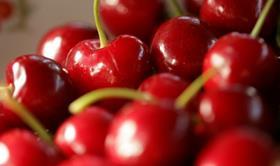
Argentina’s cherry industry is anticipating a “strong recovery” in production for 2013/14 following adverse weather last season which cut production significantly, according to local analyst Top Info Marketing.
The low production year in 2012/13 has led to the trees responding this season with more fruit, Top Info told Americafruit. Furthermore, no major weather problems have been registered so far in 2013 since the winter was benign with a sufficient accumulation of cold hours.
However, Top Info warns that the onset of spring in Argentina means the crop has entered its most critical phase, with a higher risk of late frosts, rainfall during flowering, wind and extremes of temperature.
“For that reason, it’s impossible to provide an accurate forecast,” Top Info’s Betina Ernst explained to Americafruit.
Despite that, Ernst said that trends within Argentina’s cherry industry are set to strengthen in 2013/14. “Mendoza will continue to lose importance given the retraction of production there and the advance of Patagonia’s cherry industry,” she noted.
Export-wise, Top Info said the industry is anticipating a strong growth in sendings to Hong Kong and China which will come at the expense of other destinations like Europe, the US and Brazil.
Overall, export volume is set to recover in part, although sendings will not reach the levels achieved at the end of 2000 due to rising costs. Indeed, Top Info noted that the ongoing increase in costs is continuing to reduce the competitiveness of Argentina’s fruit industry on the export market.
“In the last few months high costs have been joined by annual inflation of 20-30 per cent,” Ernst pointed out. “Meanwhile, Argentina’s currency has devalued by 15 per cent annually, which is well below the increase in costs. This is complicating exports.”
Despite the difficulties, Top Info concludes that on the whole Argentina’s 2013/14 cherry crop should be better than last season.
In 2012/12 Argentina exported only 1,600 tonnes of cherries, marking the industry’s lowest volume for eight years and effectively half of the export total achieved in the bumper crop years of 2010 and 2005.
Traditionally, Argentina has exported its cherries primarily to the European Union (EU), especially to the UK, according to Top Info. But in the last few years Asia has grown as a key market, while North America and Brazil have retained their importance. As a result, last season almost the same volume of Argentinean cherries was exported to Asia as to the EU, according to Top Info.



